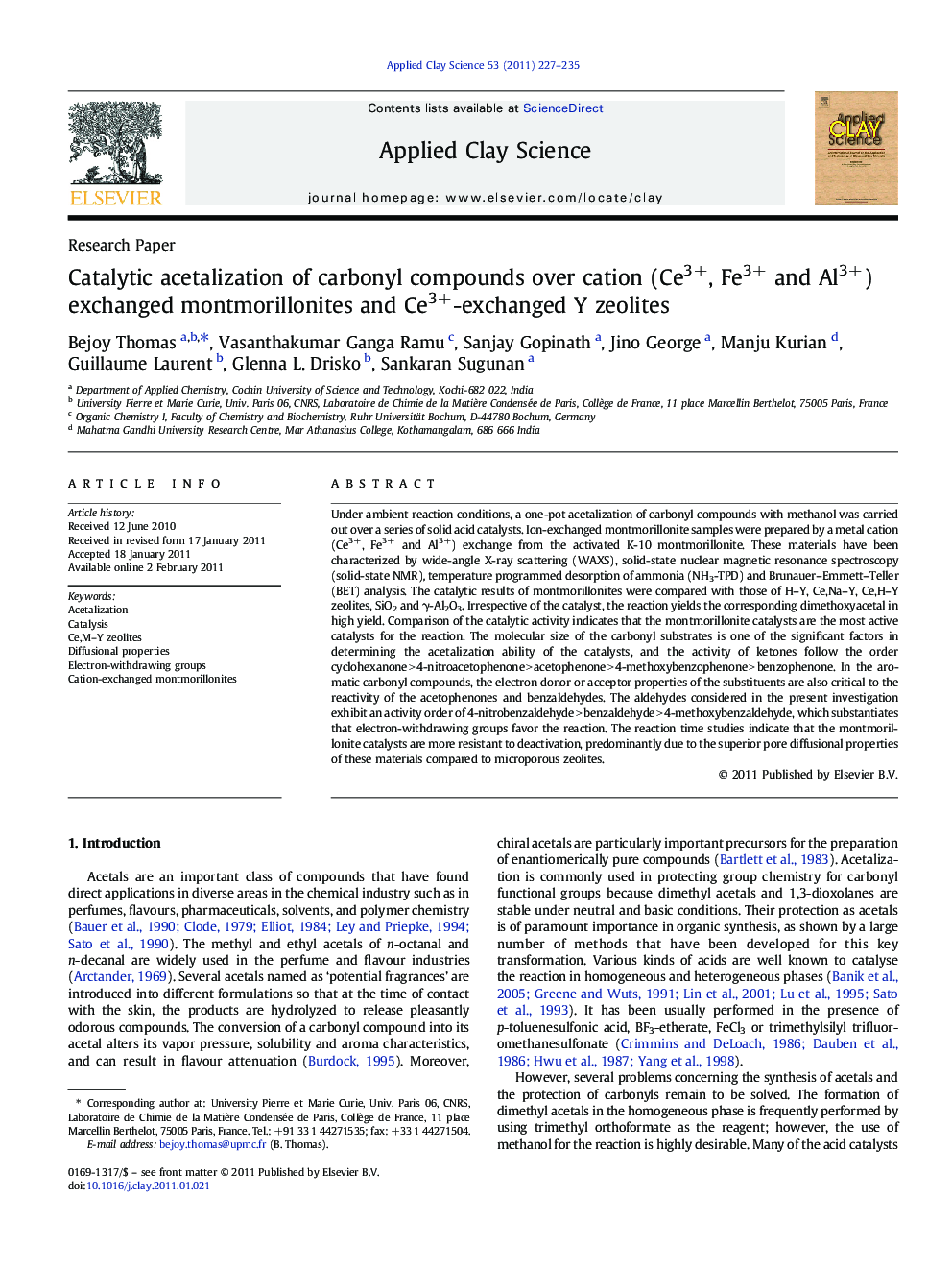| Article ID | Journal | Published Year | Pages | File Type |
|---|---|---|---|---|
| 1695628 | Applied Clay Science | 2011 | 9 Pages |
Under ambient reaction conditions, a one-pot acetalization of carbonyl compounds with methanol was carried out over a series of solid acid catalysts. Ion-exchanged montmorillonite samples were prepared by a metal cation (Ce3+, Fe3+ and Al3+) exchange from the activated K-10 montmorillonite. These materials have been characterized by wide-angle X-ray scattering (WAXS), solid-state nuclear magnetic resonance spectroscopy (solid-state NMR), temperature programmed desorption of ammonia (NH3-TPD) and Brunauer–Emmett–Teller (BET) analysis. The catalytic results of montmorillonites were compared with those of H–Y, Ce,Na–Y, Ce,H–Y zeolites, SiO2 and γ-Al2O3. Irrespective of the catalyst, the reaction yields the corresponding dimethoxyacetal in high yield. Comparison of the catalytic activity indicates that the montmorillonite catalysts are the most active catalysts for the reaction. The molecular size of the carbonyl substrates is one of the significant factors in determining the acetalization ability of the catalysts, and the activity of ketones follow the order cyclohexanone > 4-nitroacetophenone > acetophenone > 4-methoxybenzophenone > benzophenone. In the aromatic carbonyl compounds, the electron donor or acceptor properties of the substituents are also critical to the reactivity of the acetophenones and benzaldehydes. The aldehydes considered in the present investigation exhibit an activity order of 4-nitrobenzaldehyde > benzaldehyde > 4-methoxybenzaldehyde, which substantiates that electron-withdrawing groups favor the reaction. The reaction time studies indicate that the montmorillonite catalysts are more resistant to deactivation, predominantly due to the superior pore diffusional properties of these materials compared to microporous zeolites.
Research Highlights► Benign heterogeneous catalytic acetalization of carbonyls with methanol to dimethoxyacetals. ► Preparation, characterization and catalytic screening of metal-cation exchanged montmorillonites. ► Cerium exchanged H-Y and Na-Y zeolites. ► Pore-size effect of catalysts towards the propensity of the acetalization of carbonyls. ► Molecular size and electronic effects of the functional groups on the carbonyls towards acetalization.
